Australian Capital Territory (ACT)
These biodiversity resources for the ACT are alphabetically sorted by title.
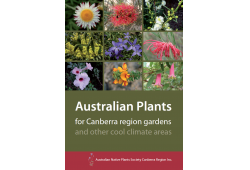
Australian Plants for Canberra Region Gardens
Australian Plants for Canberra Region Gardens is a gardening book that overflows with colour! It describes and illustrates 934 plants suitable for Canberra ...

Australian Plants for Canberra Region Gardens — Book review
A book that overflows with colour
This book is written for Canberra region gardeners by Canberra region gardeners. It brings together over 50 years of gardening experience by past and present members of the Australian Native Plants Society—formerly the Society for Growing Australian Plants—Canberra Region. This is the fifth edition, extensively revised and now with illustrations for 934 described plants, with many more forms and cultivars listed. The Australian plants selected for this book are likely to grow well in the Canberra region and in other similar cool climate areas. More than one third of the Australian plants included are ...
This book is written for Canberra region gardeners by Canberra region gardeners. It brings together over 50 years of gardening experience by past and present members of the Australian Native Plants Society—formerly the Society for Growing Australian Plants—Canberra Region. This is the fifth edition, extensively revised and now with illustrations for 934 described plants, with many more forms and cultivars listed. The Australian plants selected for this book are likely to grow well in the Canberra region and in other similar cool climate areas. More than one third of the Australian plants included are ...
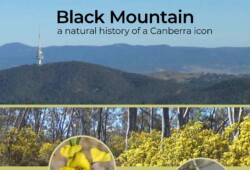
Black Mountain: a natural history of a Canberra icon
This great book on Black Mountain discusses the mountain's geology, soils, vegetation, plants and animals, fire history and walks ...
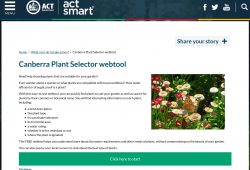
Canberra Plant Selector Tool
Canberra Plant Selector is an interactive tool designed by the ACT Government to select suitable plants for gardens in a Canberra climate ...
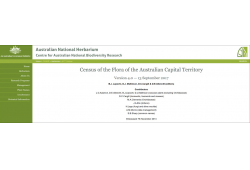
Census of the Flora of the Australian Capital Territory
Census of the flora of the ACT lists the scientific names of native and naturalised plants, fungi, lichens, hornworts, liverworts, mosses and slime moulds ...
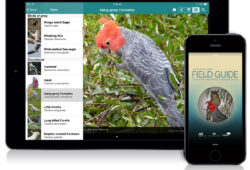
Field Guide to Australian Capital Territory Fauna app
The Field Guide to Australian Capital Territory Fauna app describes and illustrates over 730 mammals, birds, fishes, reptiles, frogs and invertebrates in The ACT. It is free ...
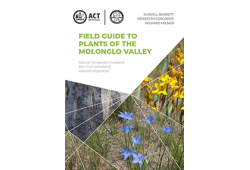
Field Guide to Plants of the Molonglo Valley (ACT)
Field Guide to Plants of the Molonglo Valley describes 394 native and exotic species from the Molonglo Valley of the Australian Capital Territory ...
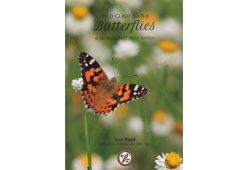
Field Guide to the Butterflies of the Australian Capital Territory
The Field Guide to the Butterflies of the Australian Capital Territory (ACT) contains species descriptions, life cycle and habitat information as well as photos, maps of records and predicted preferred habitats for the 87 butterfly species occurring in the ACT ...
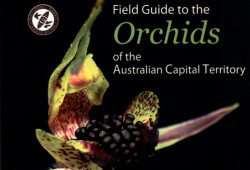
Field Guide to the Orchids of the Australian Capital Territory
The Field Guide to the orchids of the Australian Capital Territory describes and illustrates all 121 orchids that occur in the ACT ...

Field Guide to Useful Native Plants from Temperate Australia
The Field Guide to Useful Native Plants from Temperate Australia has detailed descriptions of over 150 useful plants from Australia's temperate region. More than 600 colour photographs and drawings illustrate the plant descriptions. It contains information on a wide range of uses, such as food, fibre and medicines (including notes on preparation) ...

Flora and fauna of the the Pinnacle Nature Reserve (ACT)
This webpage lists flora and fauna identified in The Pinnacle Nature Reserve in Canberra. It also has photographs ...

Flora of New South Wales
Flora of New South Wales is a major four-part work describing the naturally occurring and naturalised plants in New South Wales (including the ACT) ...

Flowers of the Australian Capital Territory and Region
Flowers of the Australian Capital Territory and Region is a field guide to native and introduced plants of this region. Each plant is illustrated with a colour photograph ...
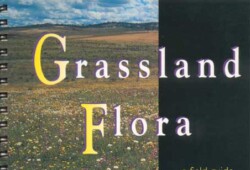
Grassland Flora: a field guide for the Southern Tablelands (NSW & ACT)
This Grassland Flora is a great field guide to the plants of the endangered grasslands in the Southern Tablelands of NSW and the ACT ...

Insects of South-eastern Australia
Insects of South-eastern Australia is a unique field guide that uses host plants and behavioural attributes as the starting point for identifying insects ...

Native Bees of the ACT and NSW South Coast
Native bees of the ACT and NSW South Coast is a guide for beginners and naturalists to recognise and identify local Australian native bees ...
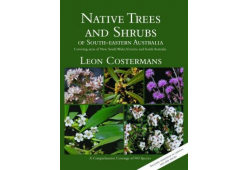
Native Trees and Shrubs of South-eastern Australia
Native Trees and Shrubs of South-eastern Australia is one of the best illustrated tools for field identification of trees and shrubs. It covers areas of New South Wales, Victoria and South Australia ...
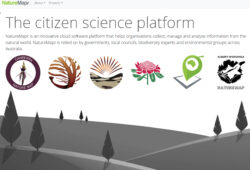
NatureMapr website and app
The NatureMapr website is a citizen science platform that helps organisations collect, manage and analyse information from the natural world ...
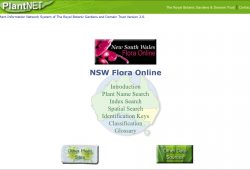
New South Wales Flora online
Data on the NSW Flora online website are derived from the printed Flora of New South Wales, augmented with data from electronic sources maintained by the National Herbarium of New South Wales. The website contains plant descriptions, an index, and identification keys to families, genera and species ...
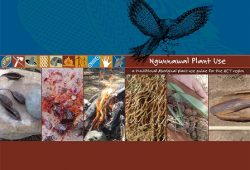
Ngunnawal Plant Use
Ngunnawal Plant Use is a traditional aboriginal plant use guide for the Australian Capital Territory (ACT) region. It describes and illustrates 69 plant species, including their Ngunnawal use, distribution, and method of propagation ...
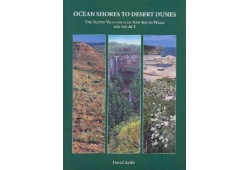
Ocean Shores to Desert Dunes
Ocean Shores to Desert Dunes describes 99 vegetation types in NSW and the ACT. Each includes an indicative species list, a location map and photographs ...
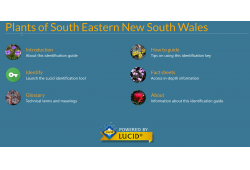
Plants of South Eastern New South Wales
The Plants of South Eastern New South Wales app describes 3900 plants in South Eastern NSW and includes a tool to identify plants: a great way to learn! ...
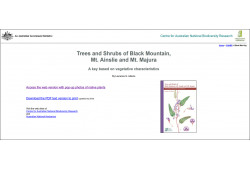
Trees and shrubs of Black Mountain, Mount Ainslie and Mount Majura
This is a plant identification key for trees and shrubs in the ACT reserves of Black Mountain, Mount Ainslie and Mount Majura. The key is based on vegetative characteristics (non flowering or fruiting characteristics) ...
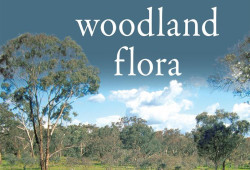
Woodland Flora: a field guide for the Southern Tablelands (NSW & ACT)
The Woodland Flora is a great illustrated field guide to trees and plants of the woodlands of the Southern Tablelands (NSW and the ACT) ...
You can also use the following Australia-wide resources.
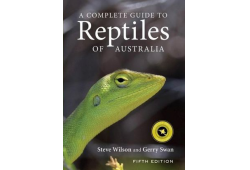
A Complete Guide to Reptiles of Australia
A Complete Guide to Reptiles of Australia provides a descriptions, distribution map and colour image(s) for all Australian reptiles ...
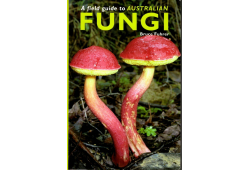
A Field Guide to Australian Fungi
A Field Guide to Australian Fungi describes 500 fungi species and has 548 colour photographs of fungi in their natural environment ...
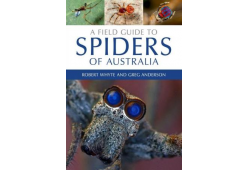
A Field Guide to Spiders of Australia
A Field Guide to Spiders of Australia uses photographs of living animals to help people identify many of the spiders they encounter ...
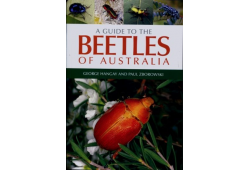
A Guide to the Beetles of Australia
A Guide to the Beetles of Australia emphasises the environmental role of beetles, their relationships with other plants and animals and their importance to humans ...

Atlas of Living Australia
The Atlas of Living Australia (ALA) is a collaborative, national project that aggregates biodiversity data from multiple sources ...
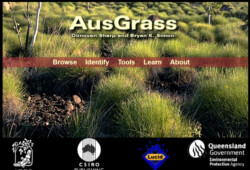
AusGrass website
The AusGrass website is a free interactive information system and identification key for 1323 native and naturalised species of grass in Australia ...
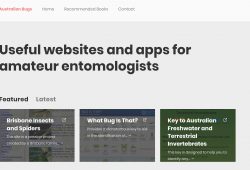
Australian Bugs
The Australian Bugs website has links to many resources about Australian bugs: insects, spiders, ants, bees, wasps, beetles, and more ...
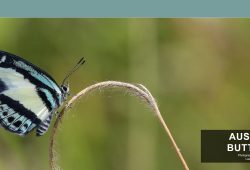
Australian Butterflies website
The Australian Butterflies website by Martin Purvis has excellent photographs of 319 Australian butterfly species ...
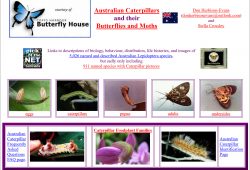
Australian Caterpillars and their Butterflies and Moths website
The Australian Caterpillars and their Butterflies and Moths website has images and links to information on Australian caterpillars, butterflies and moths ...
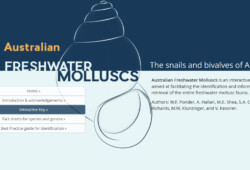
Australian Freshwater Molluscs website
The Australian Freshwater Molluscs website is a free interactive information and identification site for Australian freshwater molluscs (snails and bivalves) ...
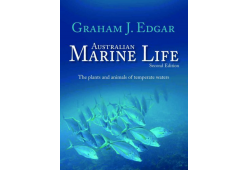
Australian Marine Life
Australian Marine Life describes 1450 of the most commonly seen plants and animals of the temperate marine waters of Australia ...
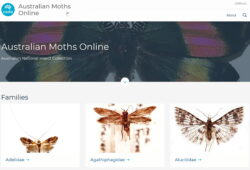
Australian Moths Online website
The Australian Moths Online website is a database of excellent images of Australian moths from the CSIRO Australian National Insect Collection ...
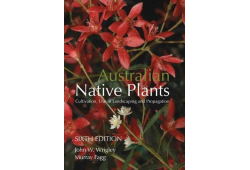
Australian Native Plants — Cultivation, use in landscaping and propagation
This sixth edition of Australian Native Plants describes more than 1500 Australian native plants for the garden and is suitable for gardeners around Australia ...

Australian Native Plants: Cultivation and Uses in the Health and Food Industries
Australian Native Plants: Cultivation and Uses in the Health and Food Industries gives an overview of native food crops commercially grown in Australia. These include: Anise Myrtle, Bush Tomato, Desert Raisin, Davidson s Plum, Desert Limes, Australian Finger Lime, Kakadu Plum, Lemon Aspen, Lemon Myrtle, Muntries, Native Pepper, Quandong, Riberry, and Wattle Seed ...
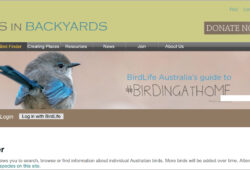
Birds in Backyards website
The Birds in Backyards website is a research, education and conservation program of BirdLife Australia. It focuses on the birds that live where people live and has a great Bird Finder identification tool on its site ...
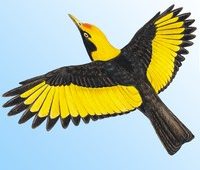
Birds of Australia
The Birds of Australia app makes identifying Australian birds in the bush so much easier. It's also a great way to learn more about birds ...

Birds of Australia — App review
I love the 'Birds of Australia' app. It makes identifying Australian birds in the bush so much easier. It's also a great way to learn more about birds ...
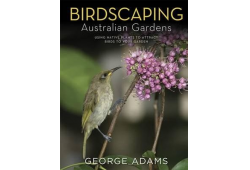
Birdscaping Australian Gardens
Birdscaping Australian Gardens helps you identify the most common Australian garden birds and choose native plants that will attract these birds to your backyard ...
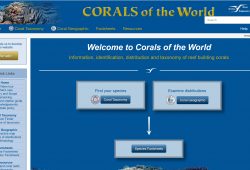
Corals of the World website
The Corals of the World website by Great Barrier Reef specialist Charlie Vernon, has information, descriptions, distributions on all corals in the world, including all those in Australian waters ...
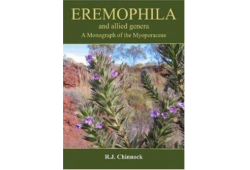
Eremophila and Allied Genera
Eremophila and Allied Genera presents a treatment of species in the Myoporaceae plant family. It provides detailed plant descriptions, as well as analytical drawings, notes on distribution, ecology, conservation status and relationships ...
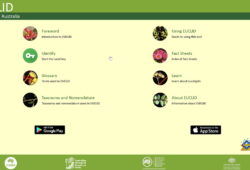
EUCLID Eucalypts of Australia website
The EUCLID Eucalypts of Australia website has an online database and interactive identification tool of eucalyptus (Eucalyptus, Corymbia, Angophora) species in Australia. The database contains information on 934 species and subspecies, and covers all Australian states and territories ...
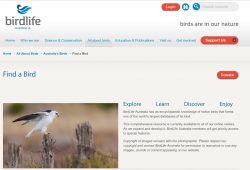
Find a bird — Birdlife Australia
The 'Find a bird' page on the Birdlife Australia website has pictures and lots of information on bird identification, location and behaviour ...
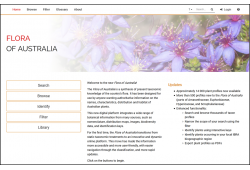
Flora of Australia online
The Flora of Australia online, based on the published Flora of Australia, lists the names, characteristics, distribution and habitat of Australian plants ...

FrogID project and identification app
The FrogID app is a way to both participate in the Australian Museum's FrogID project and to identify the frogs you may find in Australia. It is free ...
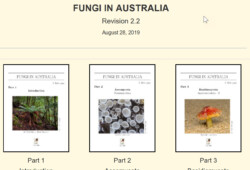
Fungi in Australia
The Fungi in Australia ebooks (PDF) include 380 species of fungi, with 2000 excellent images. They help naturalists identify fungi from native Australian forests ...

How to create a wildlife-friendly garden
If you want to help native animals survive and thrive, convert to a wildlife-friendly garden with local plants. With these 10 easy changes, you can convince local wildlife to stay in your garden ...
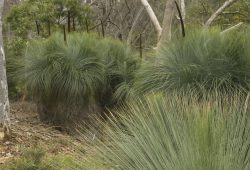
How to grow grass trees from seed
In this article, I show you how easy it is to grow grass trees from seed, how to identify grass tree species, and where to see them in nature in Australia ...
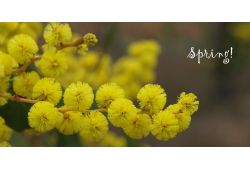
How to grow wattle trees from seed
It's easy to grow wattle trees from seed. Wattles are great garden plants and most put on a spectacular display when they flower. As there are so many species of wattles in Australia, it is not hard to find a suitable one for your garden, no matter where you are in Australia ...

Insects of South-eastern Australia
Insects of South-eastern Australia is a unique field guide that uses host plants and behavioural attributes as the starting point for identifying insects ...
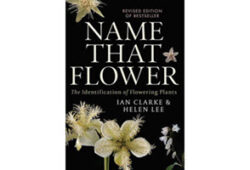
Name That Flower: The Identification of Flowering Plants
Name That Flower is a comprehensive guide to identifying flowering plants and focuses on plant families that occur in Australia ...
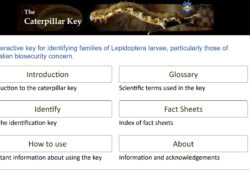
The Caterpillar Key website
The Caterpillar Key is a scientific identification key for Australian caterpillar families. It focuses on families of biosecurity concern to N Australia ...
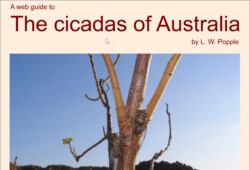
The cicadas of Australia website
The cicadas of Australia website is an amazing resource on Australian cicadas. It provides cicada images, scientific and common names ...
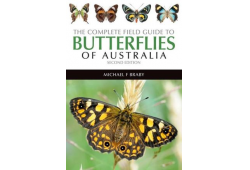
The Complete Field Guide to Butterflies of Australia
The second edition of the award-winning book The Complete Field Guide to Butterflies of Australia is a fully updated guide to all butterfly species on Australia’s mainland and remote islands ...
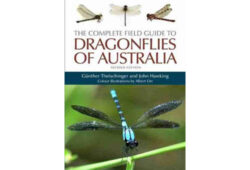
The Complete Field Guide to Dragonflies of Australia
The Complete Field Guide to Dragonflies of Australia (2nd ed) describes 333 species of dragonflies and damselflies that occur in Australia ...
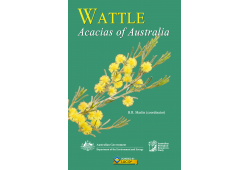
WATTLE Acacias of Australia 3
WATTLE Acacias of Australia 2.2 is an online database to identify wattles (Acacia) species in Australia. It contains all known species that have been described to date (2018). This is a great tool, but requires botanical knowledge and knowledge of the database, Lucid key, functionality. It is available free online ...
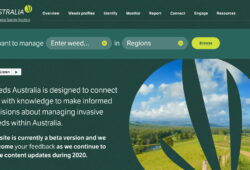
Weeds Australia website
The Weeds Australia website has information about 398 weed species in Australia; why weeds are a problem; how to identify and record them; and how to manage them ...

